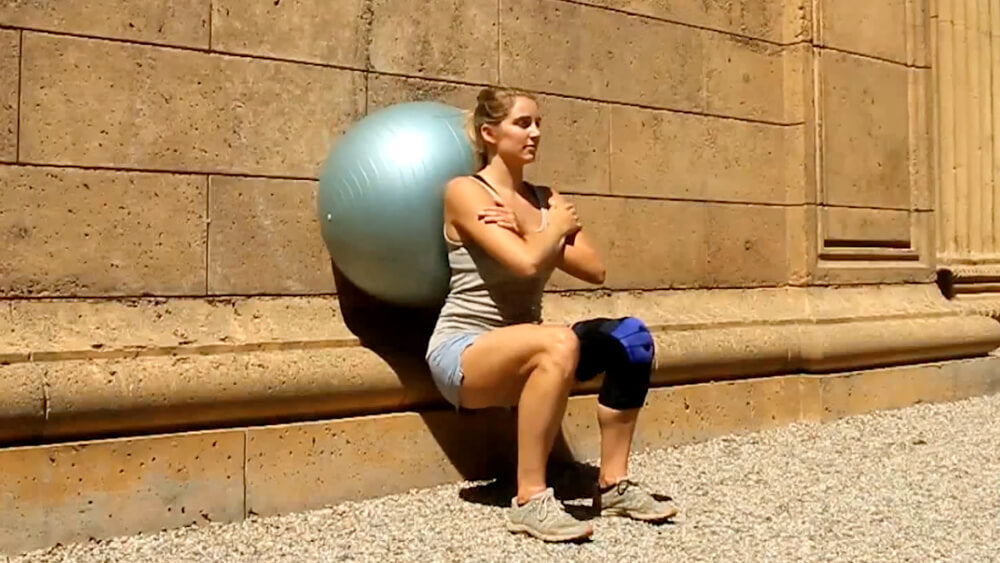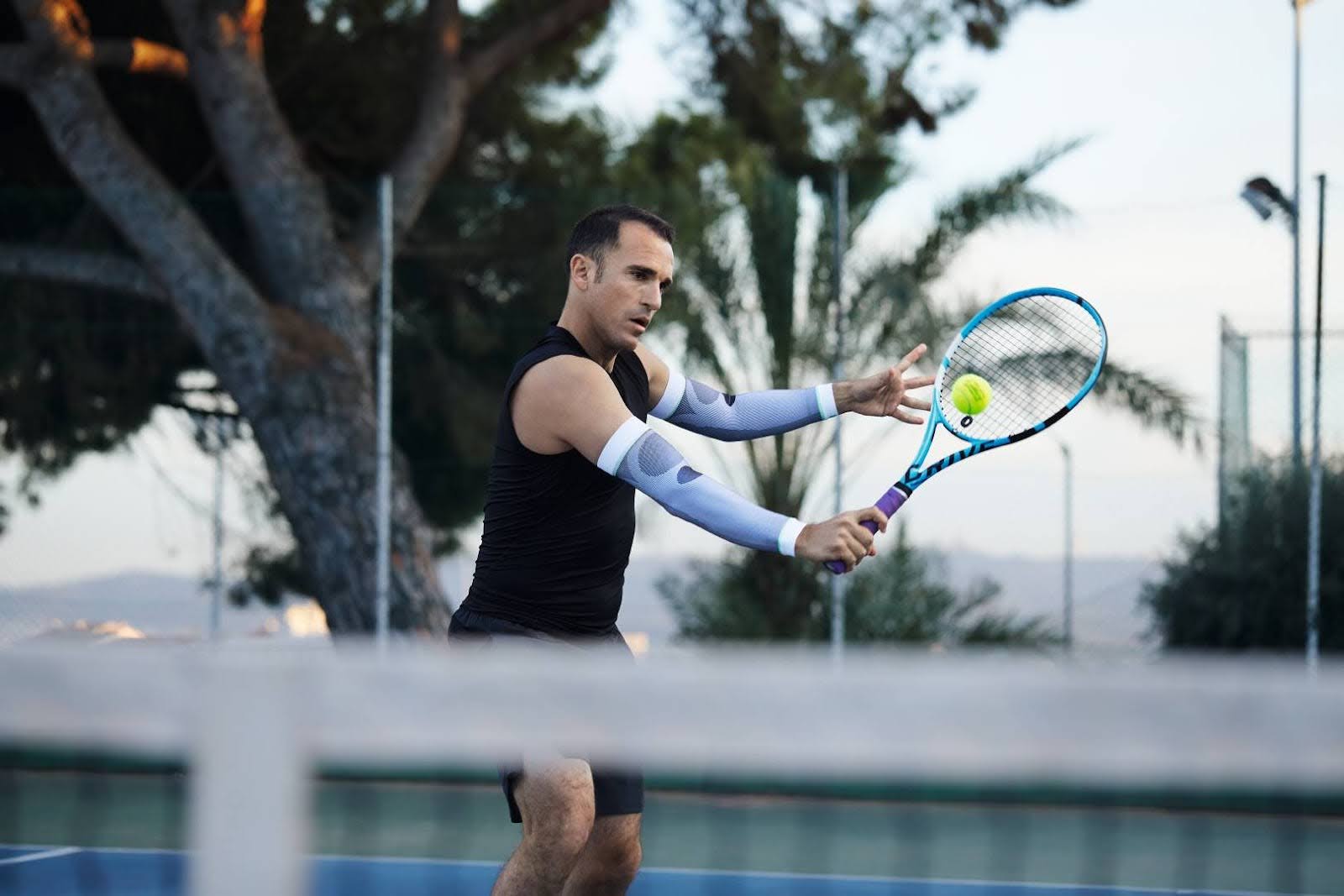OUR WORKOUT VIDEOS ARE PUT TOGETHER BY SPECIALISTS TO HELP YOU GET ACTIVE AND STAY INJURY-FREE.
Strengthen the muscles that support and move the hips and knee
Did you undergo knee surgery? Still recovering from a knee injury? Stability wall squats are a great option. This exercise helps strengthen the muscles around the knee while going a little easier on the joint. So, without further ado, here are the benefits of stability wall squats and how to do them.
The benefits of wall squats
Wall squats target similar muscle groups to regular squats, namely the quads, glutes, and hamstrings, which are essential for knee and hip stability and function. These muscles are also vital in helping you jump, run, cycle, and walk.
However, this squat variant is a bit easier on the knees as some of your body weight is pressed into the ball. This exercise doesn’t put as much pressure on the knees, so it’s often the preferred choice for knee rehabilitation post-injury and surgery.
How to do stability ball wall squats
You will need a stability ball (AKA a yoga/exercise ball) and a flat vertical surface for this exercise.
- Position the stability ball behind you, compressing it between your back and the wall. Since this ball is quite big, it will likely reach your upper and lower back.
- Place your hands on your quads or cross them over your chest.
- Gently press into the ball, ensuring your weight is supported and the position feels stable.
- Put your feet shoulder-width apart and around 20 cm in front of your body.
- Lower your hips and bend your knees until your thighs are parallel to the ground. For an easier squat, you can just go down to a depth you feel comfortable with. Keep your feet flat on the ground throughout the movement. Most of your weight should be pressed into your heels. Ensure your knees never move past your toes.
- Hold this position for 5 seconds. Exhale and push up to return to your start position.
- Repeat for 8-12 reps.
Knee rehab and pain relief with wall squats and bracing
But as you exercise, offering the knee additional support is also important. A knee brace will help protect the knee from stresses that could interrupt the healing process. It will also help relieve pain and support muscle function, making squatting and other strengthening exercises easier.
- Bauerfeind’s GenuTrain S Knee Brace provides the support and compression needed to protect your knee and promote healing.
- Its compression knit fabric stimulates the muscle to support the knee through movement better.
- The fabric also boosts circulation to injured tissues and reduces swelling
- The knee brace’s system of hinges, stays, and straps takes the pressure off the joint
- And its patella pad massages the knee, relieving pain
If you require assistance selecting the right product for your needs or wearing the brace, call us on 098015660 or contact us via live chat.
Do you have private health? Most private health extras will cover Bauerfeind Products. Check to see if yours is included. Bauerfeind Private Health Insurance Inquiry.
This information is provided for general information purposes and should not be relied on as a substitute for medical advice, evaluation or care from a qualified and licensed healthcare provider. The information contained here should not be considered a plan of care or physical therapy.
















